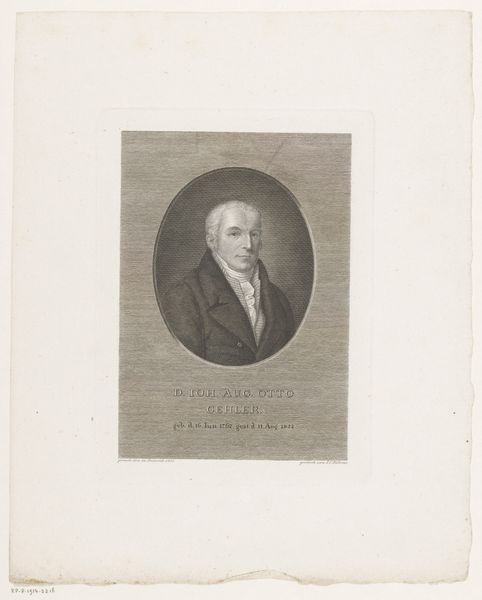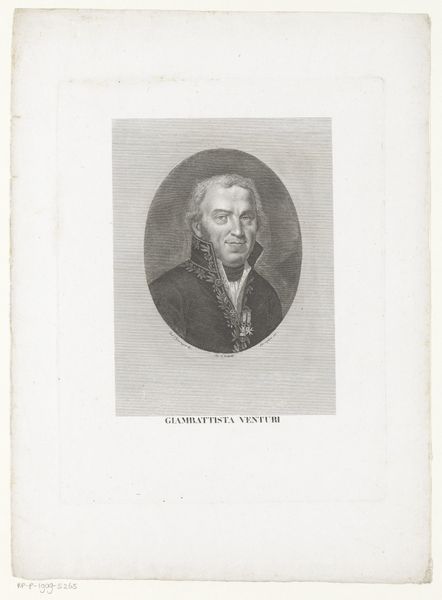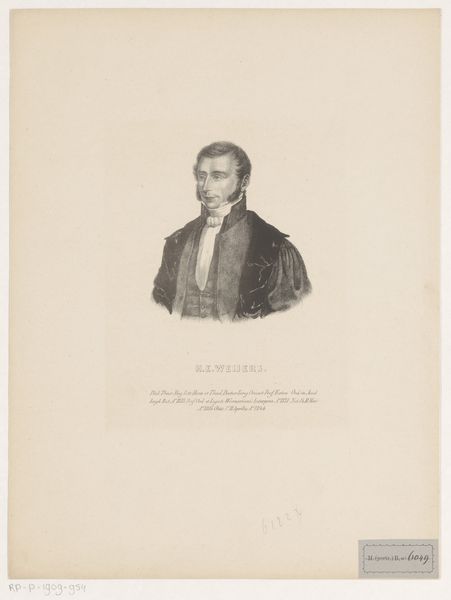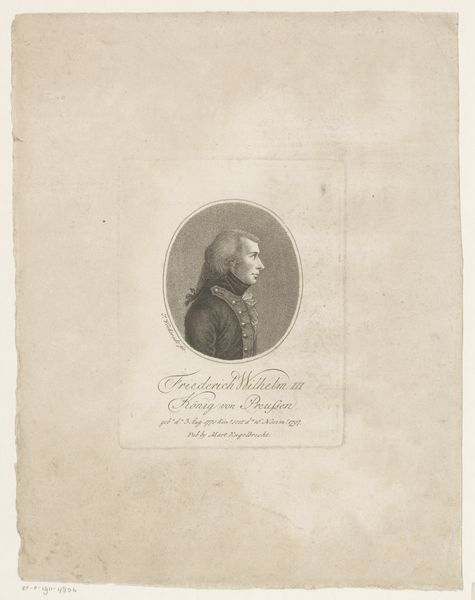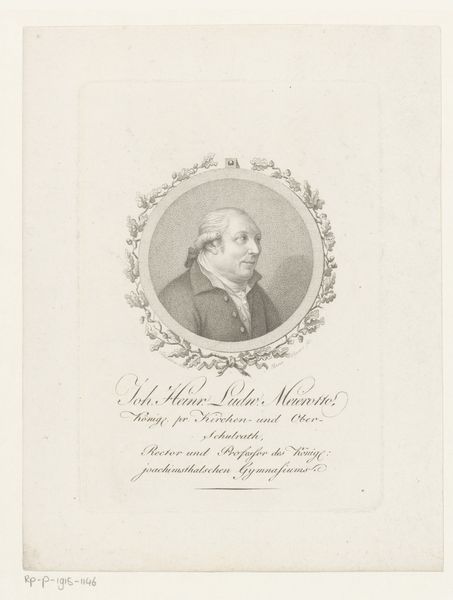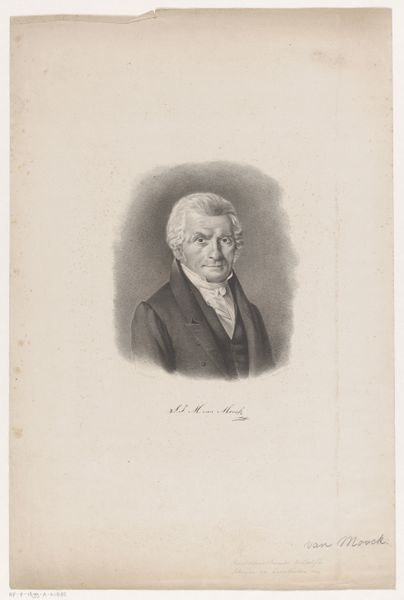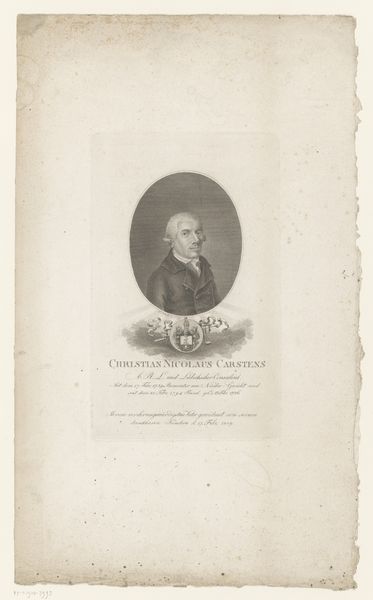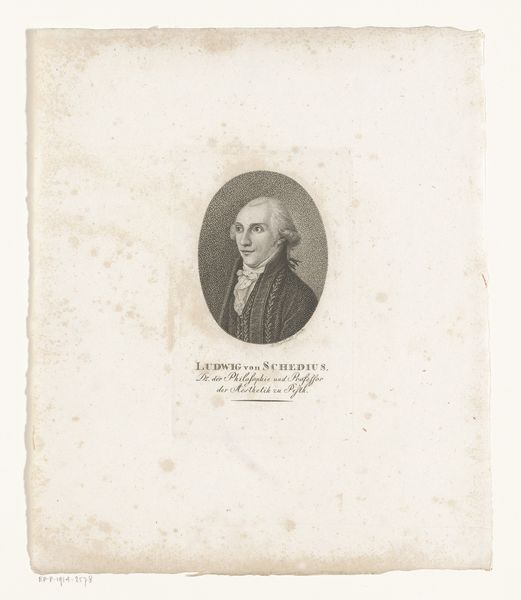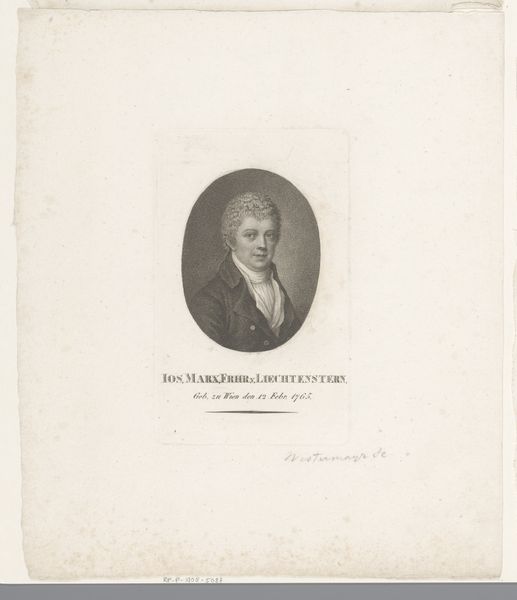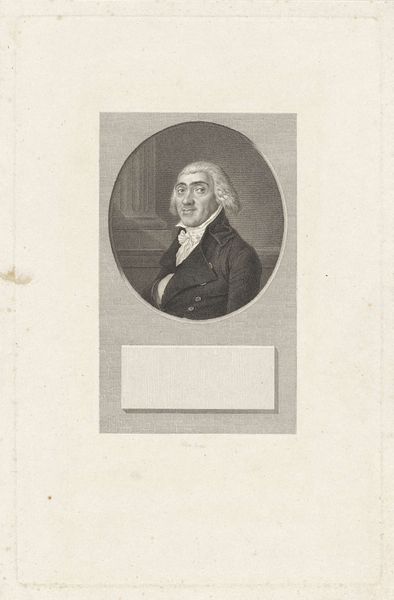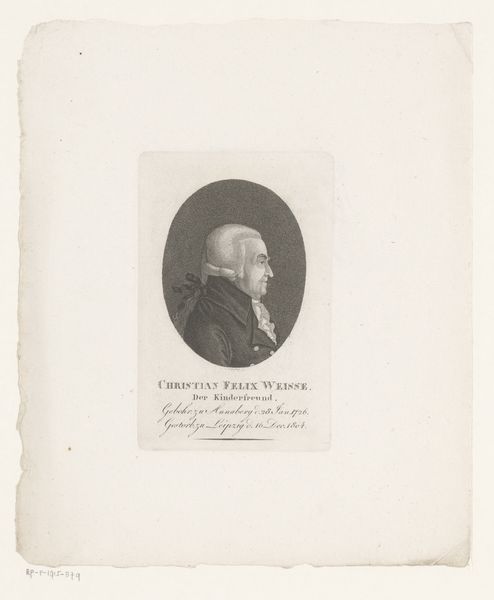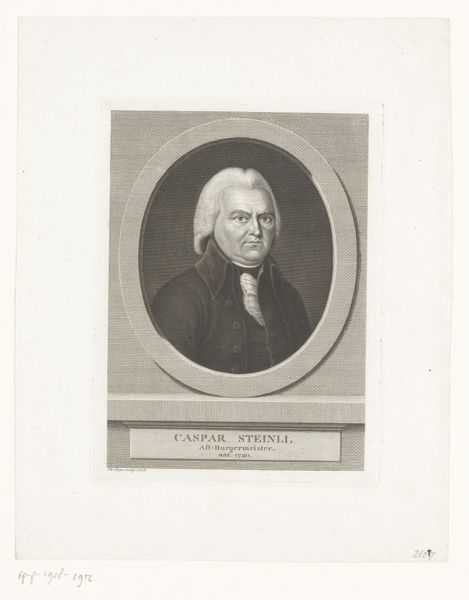
print, intaglio, paper, graphite, engraving
#
portrait
#
neoclacissism
# print
#
intaglio
#
paper
#
graphite
#
engraving
Dimensions: height 163 mm, width 142 mm
Copyright: Rijks Museum: Open Domain
Curator: Here we have "Portret van Willem Christiaan van Manen," a print made in 1817, currently held in the Rijksmuseum. It’s a rather formal depiction, isn't it? Editor: Very much so. It's austere. The oval format containing the portrait lends itself to an immediate sense of gravity. The color is subtle, almost entirely monochrome. I’m curious, though—how does an engraving come to exude such... quiet power? Curator: The magic is in the process, I would argue. Engraving and etching—intaglio techniques where the image is incised into a metal plate, filled with ink, and then transferred to paper. Look closely; the variation in line thickness creates depth and nuance. This highlights a real mastery of material manipulation, as the creator builds both shadow and volume via physical effort. It takes labor. Editor: Labor indeed! One can only speculate about the kind of collaboration behind it as well, when multiple signatures such as W.H. Caspari appear as part of the inscription. I suppose that tells something about the complex nature of production and perhaps about the image as a reproduced commodity. Also, look at the quality of the paper. The inscription printed below speaks about the portrayed subject and even though the name and titles convey some details, it makes me question the purpose behind making and circulating prints such as this. Was this a memorial print or meant to elevate the depicted figure to sainthood? Curator: Good question. Considering the date, 1817, and the man’s attire, the portrait speaks of order, reason and piety of the Neoclassical moment. He's carefully positioned within that oval, almost like a framed ideal. But beyond that the lack of ornamentation places the focus firmly on Manen's face. It’s stark in its plainness. Editor: Yes, that unadorned quality is really thought-provoking when considering who the intended consumers of this were at the time. The question then becomes not just about artistry but distribution channels and potentially commercial exploitation within a religious community in a world quickly transitioning into industrialized production. Curator: Perhaps, ultimately, we circle back to the very real human labor, material choices, and context involved. Thank you for pointing towards the broader societal factors here. Editor: An essential part of comprehending visual outcomes, I would venture to argue. It complements the meticulous detailing well.
Comments
No comments
Be the first to comment and join the conversation on the ultimate creative platform.
